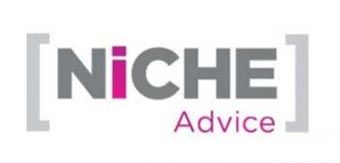
In this article, I discuss the workings of a rental calculation for a Limited Company mortgage.
Lets review how we work out Limited company Buy to Let rental calculations by a formula with two components: rental coverage and interest rate.
RENTAL COVERAGE
In nearly all cases Limited Company residential buy to lets rental calculations default to the mortgage lender’s lowest required coverage.
This formula varies between mortgage lenders but is typically 125% coverage. The 25% buffer being there for the Limited Company landlord to build up a reserve to cover the management and wear and tear costs, and rental voids. It is, however, important to point out corporation tax, director’s remuneration and dividends are seemingly not provided for so as a landlord you should be aiming higher as a yield particularly if the intention is to draw a regular income.
To put this into perspective residential buy to lets in a personal name for a higher rate tax payer would be calculated at 140% to 145%, so this shows how attractive the Limited Company approach can be.
So the theory is perhaps best demonstrated by an example:
The mortgage payment is £100pcm so the rental income needs to be at least £125pcm for a Limited Company. If however, it was a personal name buy-to-let for a higher rate tax payer £145pcm per hundred.
The other consideration is the existing background mortgaged properties. They too are likely to be subject to passing the same test as above. And, the factor is likely to be even more stringent if you own four or more mortgaged properties as most lenders are governed by the second set of rules imposed on them by the Prudential Regulatory Authority (PRA).
INTEREST RATE
The next part of the formula is determined by the mortgage product. For products that have a rate benefit for less than 5 years, or are variable; the assumed interest rate in the calculation is 5.50%. Fixed rates 5 years or more can work off the payrate. Most Limited Company Mortgage Lenders currently have 5 year fixed rates under 5.50% so by taking this option you would be able to borrow more.
So to make into an example based on a £100,000 interest only mortgage:
@ 5.50% = £458.33
@ 3.50% (typical 5 year fix) = £291.67
So you can see rental coverage is far easier on a 5 year.
Let’s draw this formula back together to show the overall outcome in a mock case around Limited company Buy to Let rental calculations:
John is looking to buy a property to let at £300,000. He seeks a mortgage of £225,000 as he is putting down a 25% deposit. He wants to know how much the rental will need to be if he buys under a limited company as opposed to his personal name.
| Product and interest rate | Mortgage payment |
Rental needed (125% coverage) |
| 2 Year Fix @ 5.50% | £1,031 | £1,289 |
| 5 Year Fix @ 3.50% | £656 | £820 |
CONCLUSION
The de-construction of the method shows clearly the most beneficial outcome is a Limited Company Mortgage on a 5 year fix. However, as with everything greater scrutiny needs to be given when selecting such products including early repayment criteria and other associated fees and more impartiality the clients long term strategy.
Please can I also commend my article on the differences of a Limited Company mortgage to one in a Personal Name which can be read by clicking here.
Free, No-Obligation Quote today!
By completing this form you are allowing us to respond to the query by phone, email SMS and our messaging software.




